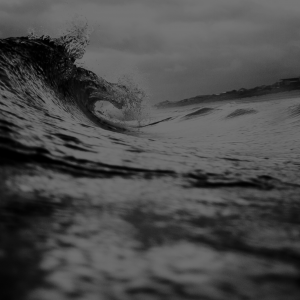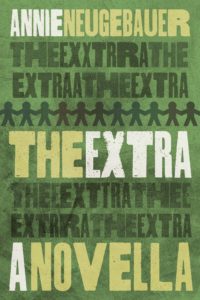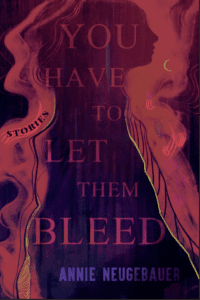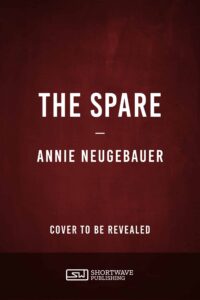There’s an idea I’ve been wanting to try for a while now, and National Poetry Month seems like the perfect time. I think it would be cool to take a poem, here on the blog, and go through the process of reading it, interpreting it, studying it, etc. It’s a concept I’ve been calling “Unpack the Poem” in my head–thanks to all of my professors over the years saying, “Can you unpack that?” when they want deeper analysis–but I’ve been hesitant to try it for several reasons. First of all, if it were to become an occasional series I add to my blog topic repertoire (as I hope it will, if there’s enough interest), I’m somewhat limited in my choice of poems. For legal reasons (copyright) I can only “unpack” poems that are in the public domain.
Another thing that’s made me hesitate is the fear of seeming like an authority. So instead of not doing this, because I do love the idea, I’ve decided to just tell you guys: I’m not an authority. I’m not a professor, a scholar, or an established poet. I’m a young poet, a reader, and a pupil of the art. So I would like to go into this little experiment with you all thinking of me not as a teacher giving a lesson, but as a fellow student who’s also figuring things out as I go. Because let’s face it–when it comes to the masters, we are all students.
[Heads up: this is a long post, so I put section headers if you’d like to skip around.]
The Poem
And what better master poet to start with than one of my personal favorites, Edna St. Vincent Millay? I was actually hoping to find another of her poems (a sonnet; “Night is my sister”), but that one doesn’t appear to be in the public domain yet. I did, however, come across this beauty that is quickly becoming a new favorite of mine. The poem is called “Inland.” Here it is untouched for you to read on your own before I skew your perspective with my own thoughts. I also decided to record an audio of myself reading it because the poem is so dang pretty when you hear it out loud.
Inland
by Edna St. Vincent Millay
People that build their houses inland,
People that buy a plot of ground
Shaped like a house, and build a house there,
Far from the sea-board, far from the sound
Of water sucking the hollow ledges,
Tons of water striking the shore,—
What do they long for, as I long for
One salt smell of the sea once more?
People the waves have not awakened,
Spanking the boats at the harbour’s head,
What do they long for, as I long for,—
Starting up in my inland bed,
Beating the narrow walls, and finding
Neither a window nor a door,
Screaming to God for death by drowning,—
One salt taste of the sea once more?
Okay, now that you’ve read the poem, let’s unpack it! Please keep in mind that these are just my interpretations, my impressions, my way of looking at this. Poetry is subjective, and as I said, I’m not an expert.
Poetic Devices
The first thing any poetry enthusiast does when she sets about analyzing a poem is scan it. Scansion is the act of discovering the metrical pattern of a poem’s lines (the most common one people recognize is good ‘ole iambic pentameter). Unfortunately, I don’t have the space today to give even a basic lesson, so if you don’t already have an understanding of metrics you might just skim this bit. (But don’t scan it; it’s hopelessly prosey. (Yeah I’m that chick who makes bad poetry jokes. Sorry.)) If you’re not up on your meter lingo, don’t sweat it. We’ll jump into some more universal stuff right after this.
For those of you who are curious, I did scan it, and I was a bit surprised by what I found. The poem is definitely metrical–obviously this is no free verse–and there are consistently four feet per line, but the types of feet vary quite a bit. The poem is predominately made up of trochees (“houses inland”), but there’s a fair share of dactyls thrown in (“Beating the”). Depending on how you scan it, there are also some iambs (“the shore”) and even a few truncated trochees (“ground” and “door,” for me).
So what does all that mean in normal speak? Every line of this poem except one begins with a stressed syllable, meaning that the poem as a whole packs a lot of punch. At times it even seems aggressive. You’ll see the exception when I get to enjambment, below, but the takeaway here is that Millay chose a meter that gives the poem a strong, forceful tone.
How about rhyme? The poem is four quatrains (stanzas of four lines each) with a rhyme scheme of ABCB, meaning that only the second and last lines of each stanza rhyme. This makes the poem lyrically pleasing without becoming overbearing or sing-songy. It’s also worth noting that the second and fourth stanzas actually share the same rhyme sound, “ore.” I think that return to the previously used sound–along with the repeated line–gives the poem a nice feeling of closure; when we get to the end we know it’s the end.
Another device employed quite a bit in this poem is that of enjambment. Enjambment is when a sentence or thought doesn’t end neatly at the end of a line (with a comma, semicolon, or period), but rather continues unimpeded into the next line. Because the eye hurries to continue the sentence, enjambment serves to soften the effect of rhyme as well as building momentum in the poem. You can see that Millay even enjambs her first stanza into her second, giving the effect of rushing forward.
Now that we’ve covered some general analysis, let’s get into the really good stuff.
Line by Line
People that build their houses inland,
People that buy a plot of ground
Shaped like a house, and build a house there,
I want to take these first three lines together, because immediately something jumps out at me about them: they repeat. A lot. “People” appears twice, as does “build,” and “house” shows up three times in as many lines! What’s up with that? Perhaps in the hands of an amateur poet we might assume this was sloppy writing, but I feel pretty confident Edna St. Vincent Millay doesn’t do sloppy, so in this case the heavy repetition is a clue to look closer. Why might she be doing it?
For me, the answer is in the subject matter. We’re talking about houses inland. The repetition of houses alone gives me the image of a whole street of houses lined up side by side. And then you throw in “a plot of ground shaped like a house.” Squares, or rectangles, right? A house is rectangular, and so is the lawn. Now I see many square houses on many square lots in many square blocks all lined up. Add the double use of the verb “build” and I’m seeing them pop up like toy houses–a whole neighborhood of cookie-cutter buildings. The impression is monotony bordering on disdain.
Far from the sea-board, far from the sound
Again, we have repetition. But rather than the percussive drudgery of the many houses, we have two long, lovely phrases back to back. The difference in impression, for me, is striking. The stanza has now gone from monotonous to lyrical; it has switched from repetitive in a grating way to repetitive in a melodious way, like waves crashing ashore.
Of water sucking the hollow ledges,
Tons of water striking the shore,—
I think it’s worth noting that these are not peaceful images of the sea as beautiful. “Sucking” and “striking” are forceful if not violent verbs, and “hollow” and “tons” both carry negative connotations.
What do they long for, as I long for
Again, any time a (good) poet repeats, it’s for a reason. Here, the double use of “long for” serves as emphasis. It intensifies the feeling of longing.
One salt smell of the sea once more?
Here we reach the crux of the first half of the poem: we see now that the poet longs for one more smell of the sea, which is doubly interesting given her dark description of it just two lines above. The alliteration in this line (the s sounds in salt smell sea once) serves to heighten it, to raise it above everything else that’s come before. We see the importance of it, and the beauty of the wording gives the message even more power–embeds longing in the reader to match the poet’s.
People the waves have not awakened,
Spanking the boats at the harbour’s head,
Now we begin the second half of the poem in a similar structure to the first; people “other” than the poet herself. Again, we get a violent, forceful verb to describe the actions of the sea.
What do they long for, as I long for,—
More repetition, another increase in the intensity of longing.
Starting up in my inland bed,
A very telling line. In the first stanza we felt the poet’s pity-nearing-contempt for people living inland, and here we’re told quite plainly that she is among them. We’re left to wonder if the poet turns that disdain inward. We’re also left to draw the conclusion that the difference between her and these others is that she once lived by the sea and they have not (see the “not awakened” line).
Beating the narrow walls, and finding
Neither a window nor a door,
Another forceful verb, “beating,” continues to increase the intensity of the poem. Then the narrow walls combined with the lack of an exit escalates the square boxes we imagined in the beginning to a level of imprisonment–a claustrophobia-inducing trap.
Screaming to God for death by drowning,—
One salt taste of the sea once more?
Finally, we reach a fever pitch, a shiver-inducing climax. These two lines are explosive. The poet is literally screaming, begging God for death just so she can finally be at her so longed-for ocean. The concept of being willing to drown simply to taste the sea one last time is breathtakingly beautiful–all the more so for how startling it is and unapologetically it’s declared. And of course, the repetition of that last line brings us full-circle, cementing the poet’s desire. The single change in the line from “smell” to “taste” changes the proximity of the sea from “near” to “in,” yet again heightening the intensity of the poet’s message, all the while dragging the poet closer and closer to what she desires.
My Interpretation
So what’s the point of all this analyzing? In my view, it’s not only to enhance my understanding and appreciation of the poem, but to take something away from it. I was instantly drawn to this poem because I have an absolute obsession with the ocean and feeling called by it, and of course I love the dark, moody tone of this piece, but what else can I learn from looking closer? The best way to get something out of a poem is to read it again. Reread it. Read it out loud. Think about it. Come back later and do it again. We miss so much when we just read once and flip the page!
The more obvious meaning I took away here was one of suicide, a poignant longing for death that’s almost hidden in a longing for the sea itself. This interpretation shows itself most strongly (show your work!) in the line where we see that the speaker is “in [her] inland bed,” knowing how much she loathes inland houses, and then of course at the end, where she wants to taste the sea even if it literally kills her. Is the poet using the risk of death to portray how strongly she longs for the ocean, or is she using a love of the ocean to portray a longing for the absolution of death? I think a strong argument could be made either way–and possibly for both at once.
There’s another meaning I get form the poem too, though–a subtler one that I picked up on when I started looking at sentence structure. If you break this poem down grammatically, you’ll see that it’s actually just two sentences long. It’s two questions, actually, with a bunch of clauses and phrases thrown in there to modify things, but the questions divide the poem neatly in half.
If you look closely at the first sentence (the first two stanzas) you’ll see that the first six lines are all describing one thing: “they.” The actual grammatical sentence here is “What do they long for?” (“As I long for…” is another modifying phrase.) And, fascinatingly, if you look at the second two stanzas, the exact same sentence is at the heart: “What do they long for?” again led and followed by more modifiers.
I don’t think it’s a coincidence that the grammatical heart of the poem is a question, and that it’s repeated (remember my theory that repetition always happens for a reason, often emphasis). It would be easy for us, as readers, to lose that question and take away only the poet’s feelings about living inland versus by the sea, but I think that would be a loss. It is, after all, formed as a question, not a statement. Perhaps the poet asks because she’s baffled and genuinely can’t fathom an answer.
Or perhaps she asks because she wants the reader to come up with their own answer–or to at least ponder the question. What might these “other” people long for, if not the sea? (Love? Family? Fulfillment?) And why doesn’t the poet long for those same things? (Perhaps she feels she’s already lost them? Perhaps she feels they’re out of her reach?) And could that lack contribute to her longing for an impersonal, violent thing? To her suicidal feelings? I think so.
But that’s only my interpretation. As T.S. Eliot said, “Genuine poetry can communicate before it is understood.” Maybe you feel something different. Maybe you see something different. (That’s perfectly okay.) Thanks for sticking with me through an unusually long post. I would absolutely love to hear your thoughts, additions, and impressions in the comments!
Share this:






I love it!!! I read this poem 3 or 4 times before I read this post and had so many thoughts about it. This is a great idea, because poetry is meant to be shared! The wonderful biography, Savage Beauty, about Edna St. Vincent Millay adds fascinating background information about her that probably sheds light on her darkness. I love your well-thought out, interesting review…
Thank you!! I’m so glad you brought that up! Biographical analysis is an entire other way of interpreting work. I know very little about Edna St. Vincent Millay (I’ve always been a reader who cares more about the work than the author), so I’d be interested to hear anything you have to say based on your knowledge of her life. And that bio title is truly beautiful!
You made me think which is no small feat before I’ve had breakfast. Very interesting post. 🙂
Haha, thanks Regina! Happy I jump-started the thinker today. 🙂
A wonderful analysis! I’ve noticed that Millay often uses different meters in her poems. You’ve made me look at this poem differently – of course, I’ve never really broken it down before as I have some of her other work. This is a great idea for a series and I hope you continue to Unpack Poems.
Thank you! I’ve mostly read her sonnets (I own a book of her collected sonnets), so I didn’t realize she likes to play with meter so much. That’s neat!
My collection of Millay is larger than any other poet. I downloaded most of them for free on Kindle and am still making my way through them. I have Collected Poems: Edna St. Vincent Millay (I’ve read this one several times, absorbing a little more with each reading); Renascence and Other Poems; Second April; A Few Figs from Thistles; Aria da Capo and The Lamp and the Bell. Her subjects are varied but her themes tend to lean toward dark. Probably why I like her so much.
That’s why I’m drawn to her as well, Missy. I guess her work is available for free on Kindle because she’s in the public domain? I’ll have to see about getting some of those on my phone. I’d love to read more of her non-sonnet work. Thanks for the tip!
I’m not sure why they were/are free. I did a search for her when I first started using the Kindle app and everything was free at that time. Don’t know about now.
It looks like they’re still free! It must be because they’re in the public domain, which means that no one owns the rights (I think). Cool!
Hmmm…She died in 1950. Do rights pass into public domain 70 years after the author’s death or 70 years after publication? Doesn’t matter. If you get to read her work for free, that’s awesome.
This is what someone sent me to explain: http://www.unc.edu/~unclng/public-d.htm It looks like it’s from publication date to me.
That makes more sense. I don’t believe Millay had any children to extend the rights.
What a great analysis! I especially like how you touch on the sing-songy quality of the iamb that, for me, tends to cheapen the line and makes me not want to take the piece seriously.
I’ve always had a difficult time picking apart poetry to get to the heart of the poet so thank you for the short tutorial on your process. I think expanding this into an occasional series is an awesome idea!
Thank you, Karen! I’m happy that sharing my own methods has helped a bit. I really would like to turn this into a repeating feature — though not too often; it took a long time! 🙂
I love so much about this: first, getting to hear your voice. What a beautiful reading of a beautiful poem. I listened to it before I read it and it just reaffirmed my belief that poetry is meant to be heard, spoken, whispered, shouted…there’s something about it rolling off the tongue that helps me understand it better. Like you, the poem resonated with me because of my obsession with the ocean. I’ve lived by an ocean my whole life except for now that I’m in Austin, which is my new home in so many, many ways…except for that one. Your analysis of Inland made me want to read more poetry. And it made me fall in love with this one, so thank you. (And I hope you’ll do this again sometime!)
Aw, thank you so much, Natalia! I have to admit, I was nervous about putting the recording up. (I know it’s a pretty common phenomenon, but I think my voice sounds so strange when I hear it played back!) But like you said, poetry is meant to be read aloud, not silently. And no matter how many times I say that, I know not everyone has the time or desire to follow through. So it was important to me to just do it, in hopes that maybe a few new people could “hear” the difference. It helps me understand the poem better, somehow, too. I remember now that you share my ocean obsession! I’m jealous though, because I’ve never lived by the coast. That makes it extra special for me when I get to go, though.
I think it’s wonderful that you love poetry so much that you enjoy dissecting and analyzing it as much as experiencing the beauty of it. I often do that with books I particularly like, trying to learn something. (With me though, I rarely learn more than that every author has a style that works for them.) Huzzah to you and your love of poetry!! 🙂
I do this with stories and novels too! Admittedly it takes much longer, but I especially love breaking down literary fiction, since it’s often more difficult to grasp on a single read. Thanks Lexa!
I also discovered this poem fairly recently (maybe we both receive the daily poems from poets.org?), and I loved it right away. I love your analysis of it — it makes me want to scan poems again. One thing that strikes me about this poem is that the repetition is reminiscent of ocean waves crashing and receding, crashing and receding.
Speaking of ocean poetry, have you read “Sea-Fever” by John Masefield? http://www.poetryfoundation.org/poem/242552
That’s funny. I used to get the daily poems but somewhere along the way they stopped. I need to sign back up for that. Actually I found this one by simply browsing what poems of Millay’s were available in public domain. I’m so glad I did!
I think you’re spot on about the repetition being ocean like. And I absolutely love “Sea-Fever”! That’s one of those poems I know I’ve read before but didn’t know the name or author, so thank you so much for sharing it with me! Now I can bookmark it with my other well-liked poems. 🙂
I’m interested in exploring poems like this. I’ve written poems in the past, though not for a while. I have to be in a special mood to write it. A lot of poems were down in a dark period of my life so they are a bit overwhelming. Still, during the time, they helped me to express myself immensely.
I tend to write poetry on a more mood-driven basis as well. It’s a wonderful way to deal with emotions. I’m glad I have that, and I’m glad you do too!
This was wonderful, Annie. I think I’ve come across that one of hers in the past, but never had anyone break it down like that for me. Loved your take on it, and hearing you read it, too. I’ve got a thing for the ocean, as well, and miss it living in land-locked AZ.
Your disclaimer was well put. I often feel the need to make a similar statement. We are all teachers and students.
Thank you so much, Cynthia! I’m glad you liked the break-down. What are we landlubbers to do? =/ I’m glad you ‘get’ the disclaimer, too. That’s something I often worry about.
I love this idea…and I’m looking forward to more “unpacking” from you! What a great way to make poetry accessible to newbies like me but also a way to having an informal chat about it all with like minded folks along the entire poetry spectrum. Well done!
Wonderful! Thank you, Kristen!
Pingback: Ba-bye cleanse, hello NJ | Ton of Worms
Love this idea and fantastic analysis of the poem. I could stand to “unpack” more of the poetry I read, if only to gain a more clear understanding of just why I love it. 🙂
Thank you so much! That’s why I like doing it too. Asking “why did I like this?” is a great habit to get into, especially for writes and poets. 🙂
I found you because of your blogging about Twitter. You honored the poem and its author by your deep reading. Do you know whether the poet’s namesake, Edna Pontellier (Kate Chopin, Awakening) had been created yet? Edna Pontellier embodied this poem, ending her life with the taste of salt water. Also, as a Modernist, Millay lived and worked in a period when other writers were exploring suicide through literature.
My favorite in all your fine comments was your discussion of enjambment. In particular, the connection of the first and second stanzas. Maybe for others, the sentence ends with “of (adjective) water” so they could move on, but Millay grabs that water and its five senses at arm’s length, twisting it to release its secrets before being sucked into its being. For reference (long posts beget long answers), here are the last line of the first quatrain paired with the first of its successor:
Far from the sea-board, far from the sound
Of water sucking the hollow ledges,
How portentous is this reference! Thanks for enriching my reading (and writing!) life.
Hi Ron! I’m so glad you found me here! I can’t tell you what a treat it is to see someone get as excited about such things as I do. 🙂
I hadn’t heard of Awakening; I had to look it up. This is fascinating! So yes, I believe “Inland” was published in 1920 while Awakening was published in 1899. Thank you so much for making me aware of this! I will definitely be looking into this more, especially given the connections you draw to Millay.
Portentous indeed! I agree with you; the enjambment does create the effect of being pulled along, much like water from a tide sucking you in. Very compelling! Thank you so much for the thoughtful comment!
Recently this poem was put to music by the artist Catch the Sparrow.
https://open.spotify.com/track/5UXW4a0JyrOcyWIs8DFFMu?si=RgAHpzdxTFGMz0-3TYuR_Q&context=spotify%3Aalbum%3A7qibUXq74xPeeayKWsqBOy
This is beautiful!